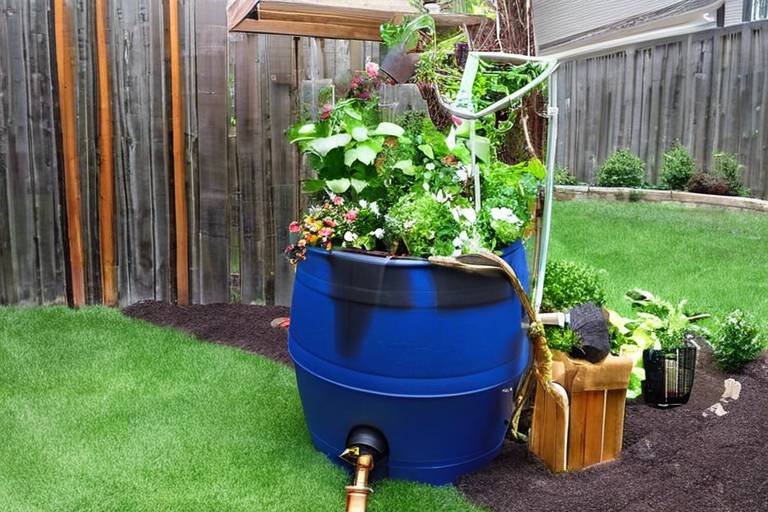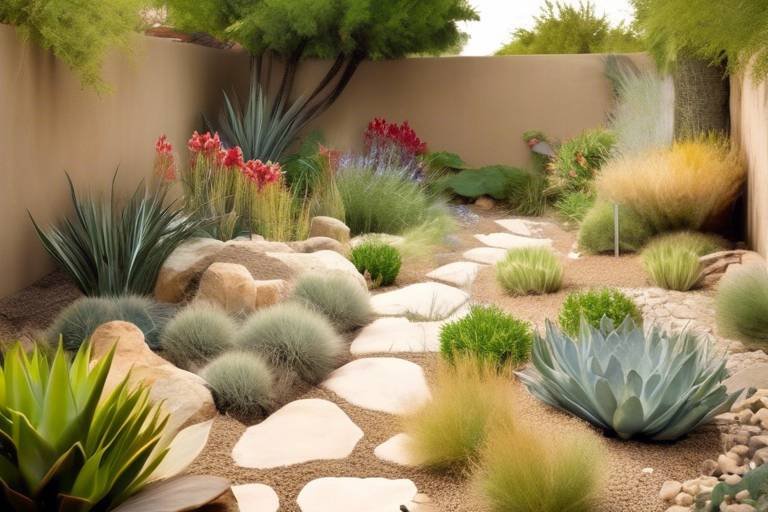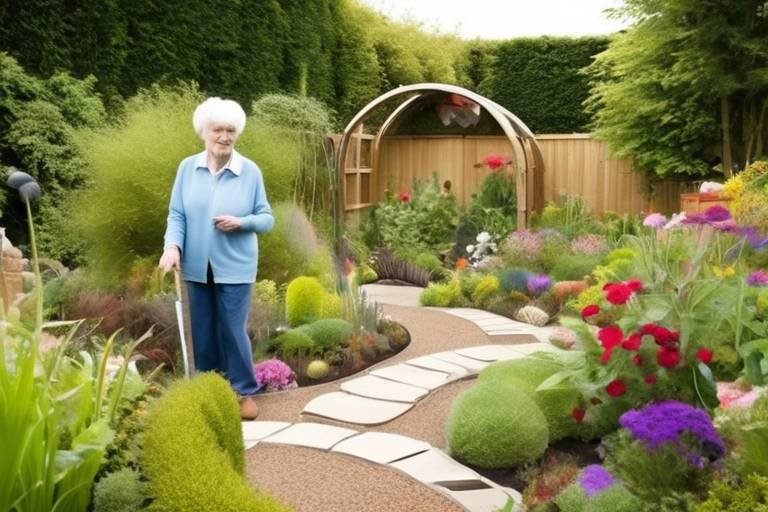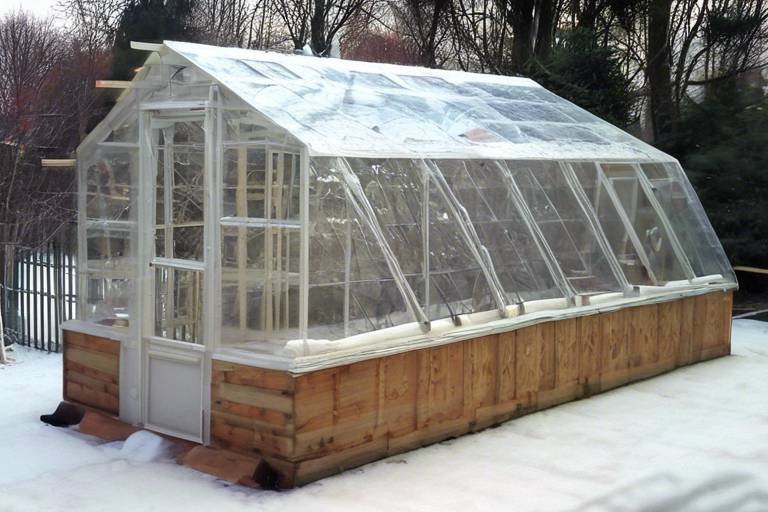How to Build a DIY Rain Barrel System for Your Garden
Are you looking to save money on water bills and reduce your environmental impact while nurturing your garden? Building a DIY rain barrel system might be the perfect solution for you. By harnessing the power of rainwater, you can create a sustainable water source for your plants while also contributing to a greener planet. Let's dive into the step-by-step process of constructing your very own rain barrel system using simple materials and easy-to-follow instructions.

Benefits of Rainwater Harvesting
Rainwater harvesting offers a multitude of benefits that go beyond simply saving money on water bills. By collecting and utilizing rainwater in your garden, you are actively contributing to environmental sustainability and reducing your carbon footprint. This eco-friendly practice not only conserves water resources but also promotes healthy plant growth by providing natural, nutrient-rich water for your garden.
One of the key advantages of rainwater harvesting is its cost-effectiveness. By harnessing free water from the sky, you can significantly reduce your reliance on municipal water sources, ultimately leading to savings on your utility bills. Additionally, rainwater is free from the chemicals and additives often found in tap water, making it a pure and natural choice for watering your plants.
Furthermore, rainwater harvesting allows you to take control of your water supply, especially during dry seasons or water restrictions. By storing rainwater in a barrel system, you ensure a consistent water source for your garden, even when faced with water shortages or drought conditions. This self-sufficiency not only benefits your plants but also gives you peace of mind knowing that you are prepared for any water-related challenges.

Materials Needed
When embarking on the journey of building your very own DIY rain barrel system, it's crucial to gather all the necessary materials beforehand to ensure a smooth construction process. Here are the essential tools and supplies you'll need to bring your rainwater harvesting vision to life:
| Materials | Quantity |
|---|---|
| Large container or barrel | 1 |
| PVC pipes | 2-3 |
| Spigot | 1 |
| Mesh screen | 1 |
| Sealant | 1 tube |
| Drill | 1 |
These materials will form the foundation of your rain barrel system, allowing you to efficiently collect and utilize rainwater for your garden's needs. The large container will serve as the main reservoir, while the PVC pipes and spigot will help in distributing the water where needed. The mesh screen is essential for filtering out debris and preventing clogs, ensuring the smooth operation of your DIY setup.

Choosing the Right Location
When it comes to setting up a rain barrel system for your garden, choosing the right location is crucial for its effectiveness. The ideal placement can significantly impact how much rainwater you can collect and how easily you can access it for watering your plants. Consider placing your rain barrel:
1. Under a Downspout: Position your rain barrel directly under a downspout to capture as much water as possible during rainfall. This ensures a direct flow of water into the barrel without any obstructions.
2. Near Your Garden: Place the rain barrel close to your garden to minimize the distance you need to carry water for irrigation. This convenience makes it easier to water your plants regularly without hassle.
3. On a Stable Surface: Ensure that the location you choose for your rain barrel is stable and level to prevent any tipping or spilling. A flat surface also helps in maintaining the structural integrity of the barrel over time.
4. Away from Obstructions: Avoid placing the rain barrel near trees or structures that could block the flow of water into the barrel or pose a risk of damage during heavy winds or storms.
5. In a Sunny Area: While not mandatory, placing the rain barrel in a sunny spot can help prevent algae growth inside the barrel by promoting evaporation and keeping the water fresh for your plants.

Building the Rain Barrel
Building the rain barrel is a crucial step in creating an efficient rainwater harvesting system for your garden. To start, you will need a large container that can hold a significant amount of water. Make sure it is sturdy and has a lid to prevent debris from entering the barrel. Additionally, gather PVC pipes, a spigot, a mesh screen, and necessary tools like a drill and saw to assemble the components.
Begin by placing the rain barrel in the chosen location, ensuring it is stable and elevated to allow gravity to aid in water flow. Cut a hole near the top of the barrel to install the spigot securely. This will serve as the outlet for accessing the collected rainwater. Attach a mesh screen over the opening to filter out any debris and prevent clogging.
Next, create an overflow system to prevent the barrel from overflowing during heavy rainfall. This can be achieved by adding a diverter that redirects excess water away from the barrel and into a safe drainage area. Ensure the diverter is properly installed and functioning to maintain the integrity of the system.
Integrate the rain barrel system into your garden landscape by connecting it to a downspout from your roof. This will allow rainwater to flow directly into the barrel for storage. Consider adding a hose attachment to the spigot for easy access to the collected water when watering your plants.
Regular maintenance is key to ensuring the longevity and efficiency of your rain barrel system. Clean the barrel periodically to remove sediment and algae buildup. Check for any leaks or damages that may compromise the functionality of the system. By following these steps, you can build a reliable rain barrel system that will benefit both your garden and the environment.

Adding a Diverter System
When it comes to enhancing the functionality of your rain barrel system, adding a diverter system can be a game-changer. A diverter allows you to redirect excess water away from the barrel during heavy rainfall, preventing overflow and potential water wastage. By incorporating a diverter, you can ensure that your rain barrel operates efficiently and effectively regardless of the weather conditions.
One common type of diverter is a simple hose attachment that diverts excess water to a designated area such as a garden bed or a drainage system. This mechanism ensures that your rain barrel does not overflow during intense rainstorms, maintaining the integrity of your water conservation efforts. Additionally, a diverter system can help prevent waterlogging in the surrounding soil, promoting healthier plant growth in your garden.
Installing a diverter is a relatively straightforward process that involves connecting the diverter to the downspout that feeds water into your rain barrel. By strategically placing the diverter along the downspout, you can control the flow of water and redirect it as needed. Some diverters even come with built-in filters to ensure that only clean water enters your rain barrel, further improving the quality of the harvested rainwater.
Furthermore, a diverter system can be customized to suit your specific needs and preferences. Whether you prefer a manual diverter that requires adjustment during rainfall or an automatic diverter that operates independently, there are various options available to enhance the functionality of your rain barrel system. By carefully selecting and installing a diverter that aligns with your garden's layout and water usage requirements, you can optimize the benefits of rainwater harvesting while minimizing potential drawbacks.

Maintaining Your Rain Barrel System
Maintaining your rain barrel system is crucial to ensure its optimal performance and longevity. Regular upkeep will not only help you make the most of your harvested rainwater but also prevent potential issues that may arise over time.
One essential aspect of maintaining your rain barrel system is keeping it clean. Regularly inspect the barrel for any debris, algae, or sediment buildup that could clog the system. Cleaning the barrel with a mixture of water and vinegar can help prevent blockages and maintain water quality.
Another important maintenance task is to check for any leaks or cracks in the barrel, pipes, or fittings. Repair any damages promptly to prevent water loss and ensure the efficient functioning of your system.
Preventing mosquito breeding is also crucial when maintaining your rain barrel system. Use a fine mesh screen to cover openings and prevent mosquitoes from accessing the water. Additionally, adding a few drops of vegetable oil to the water surface can create a thin film that suffocates mosquito larvae.
During the colder months, it is essential to winterize your rain barrel system to prevent damage from freezing temperatures. Drain the barrel completely and disconnect any pipes to avoid water freezing and causing cracks in the system.
Regularly inspecting the spigot and diverter system for any blockages or malfunctions is also recommended. Ensuring that water flows smoothly and without obstruction will help maintain the efficiency of your rain barrel setup.
By following these maintenance tips, you can ensure that your rain barrel system continues to function effectively, providing you with a sustainable source of water for your garden while contributing to water conservation efforts.

Using Rainwater in Your Garden
Using rainwater in your garden can offer numerous benefits beyond just watering your plants. By harnessing this natural resource, you can reduce your reliance on municipal water sources and contribute to a more sustainable environment. Rainwater is free from the chemicals found in tap water, making it ideal for nurturing your garden in a natural and eco-friendly way.
One of the primary uses of harvested rainwater is for watering your plants. This water is rich in nutrients and minerals, promoting healthier growth and vibrant blooms. Additionally, rainwater is softer than tap water, which can benefit sensitive plants that are prone to damage from hard water.
Another way to utilize rainwater in your garden is for washing outdoor surfaces such as patios, decks, and garden furniture. The purity of rainwater can help prevent streaks and stains that often result from using tap water mixed with chemicals.
Moreover, incorporating rainwater into your gardening routine can lead to a significant reduction in overall water consumption. By using a rain barrel system, you can collect and store rainwater during wet periods to use during drier times, effectively conserving water and lowering your utility bills.
Furthermore, rainwater is excellent for filling decorative water features like fountains or ponds in your garden. Its purity can help maintain the balance of aquatic ecosystems without introducing harmful substances that may be present in tap water.
Overall, integrating rainwater into your garden maintenance practices not only benefits your plants but also contributes to a more sustainable and environmentally conscious lifestyle. By harnessing the power of nature's gift, you can enhance the beauty of your garden while minimizing your ecological footprint.

Expanding Your System
Expanding your rainwater harvesting system can significantly increase your water storage capacity and meet the needs of a larger garden area. One effective method to expand your system is by connecting multiple rain barrels in a series. This interconnected setup allows you to collect and store a greater volume of rainwater, ensuring a sustainable water supply for your garden.
When expanding your system, consider the layout of your garden and the water requirements of your plants. Placing the additional rain barrels strategically in areas that receive ample rainfall and sunlight can optimize water collection. By distributing the connected barrels throughout your garden, you can efficiently water different sections without the need for extensive hose lengths or manual watering.
Creating a series of interconnected rain barrels involves linking them with PVC pipes or hoses to facilitate the seamless flow of water between each container. Ensure that the connections are secure and watertight to prevent leaks and maximize water conservation. By expanding your rainwater harvesting system, you can enhance the sustainability of your garden and reduce reliance on municipal water sources.
Frequently Asked Questions
- What are the benefits of using a rain barrel system in my garden?
Using a rain barrel system in your garden has numerous benefits. It helps you save money on water bills by utilizing free rainwater, reduces your environmental impact by conserving water resources, and promotes healthy plant growth due to the absence of harsh chemicals present in tap water.
- Do I need any special skills or tools to build a DIY rain barrel system?
No special skills are required to build a rain barrel system for your garden. Basic tools like a drill, saw, and measuring tape are sufficient. The materials needed are easily accessible and affordable, making it a simple and rewarding DIY project for any gardening enthusiast.
- How do I prevent mosquitoes from breeding in my rain barrel?
To prevent mosquitoes from breeding in your rain barrel, ensure that it is properly covered with a tight-fitting lid or mesh screen. Regularly check for standing water and clean the barrel to remove any larvae. Adding a few drops of vegetable oil can create a thin film on the water surface, preventing mosquito eggs from hatching.
- Can I use harvested rainwater for all my gardening needs?
Harvested rainwater can be used for various gardening tasks such as watering plants, washing outdoor surfaces, and filling decorative water features. However, it is not recommended for edible plants unless the water is filtered and treated to remove contaminants. Always use caution and follow guidelines when using rainwater in your garden.


















